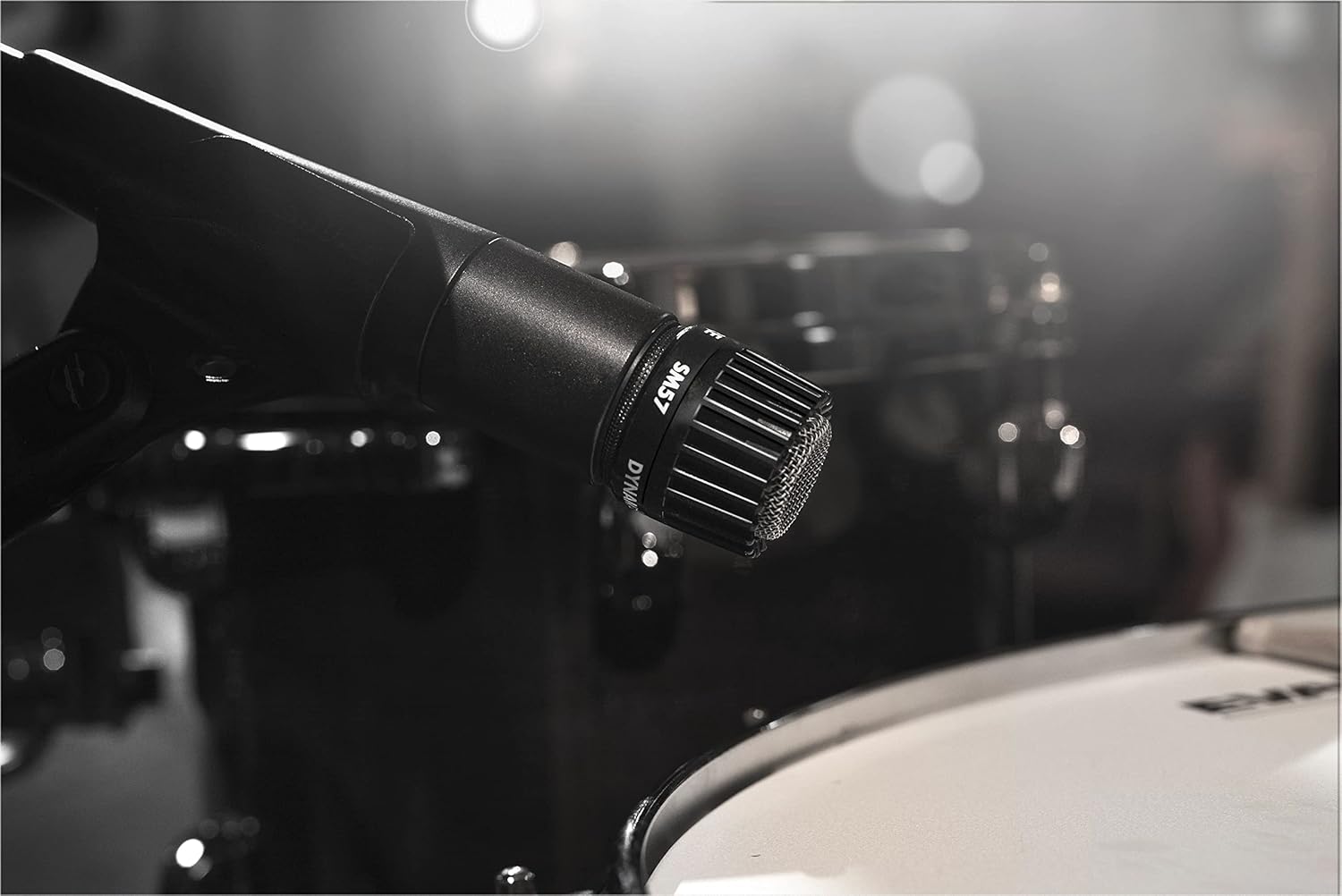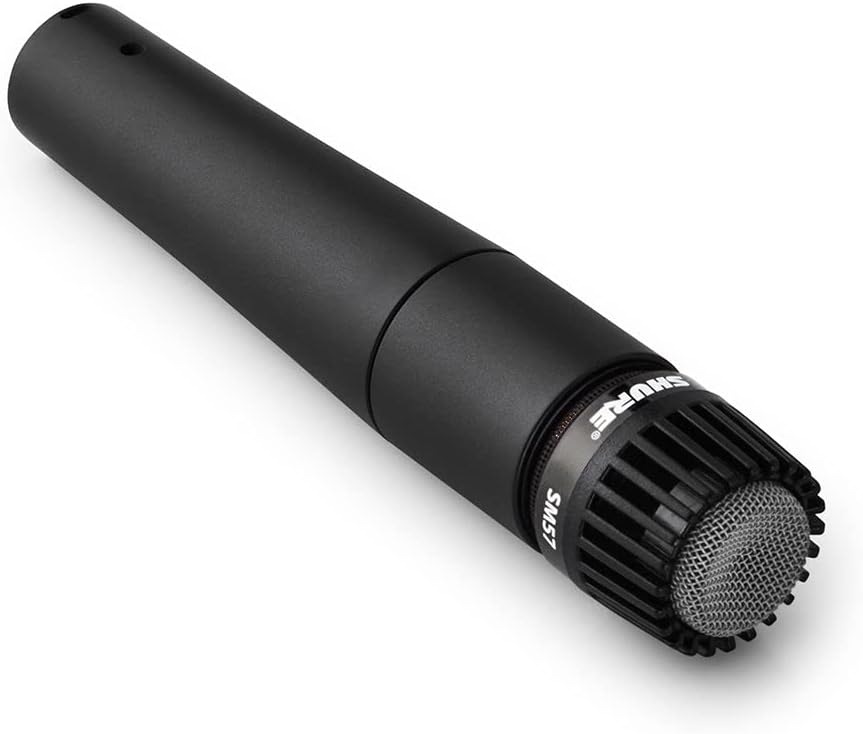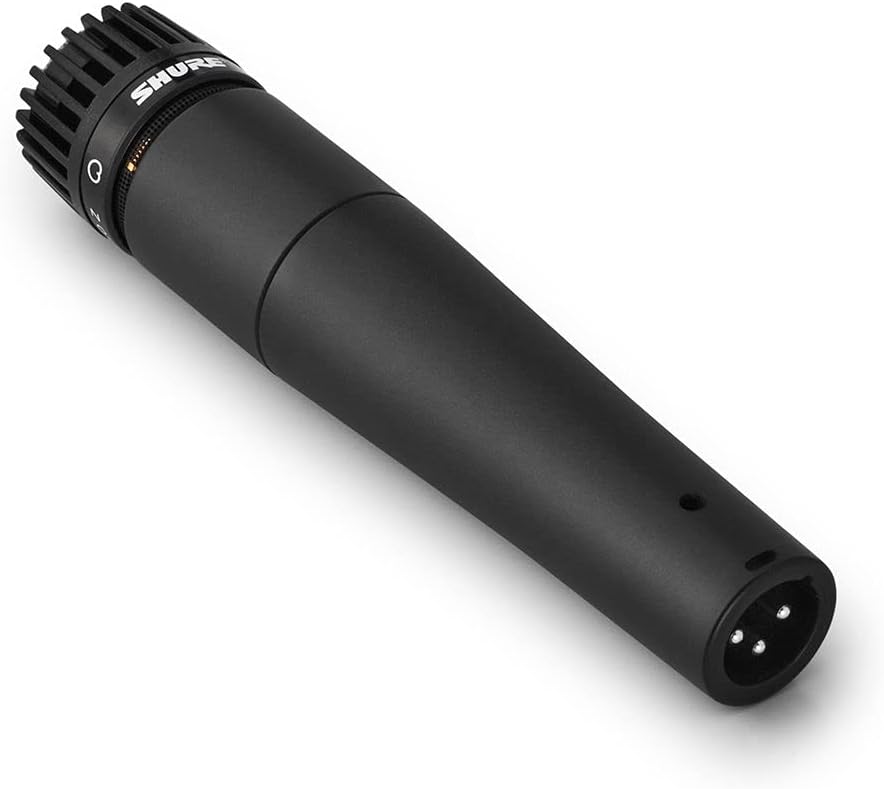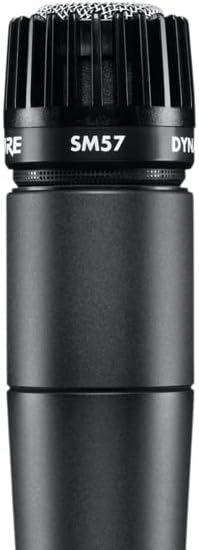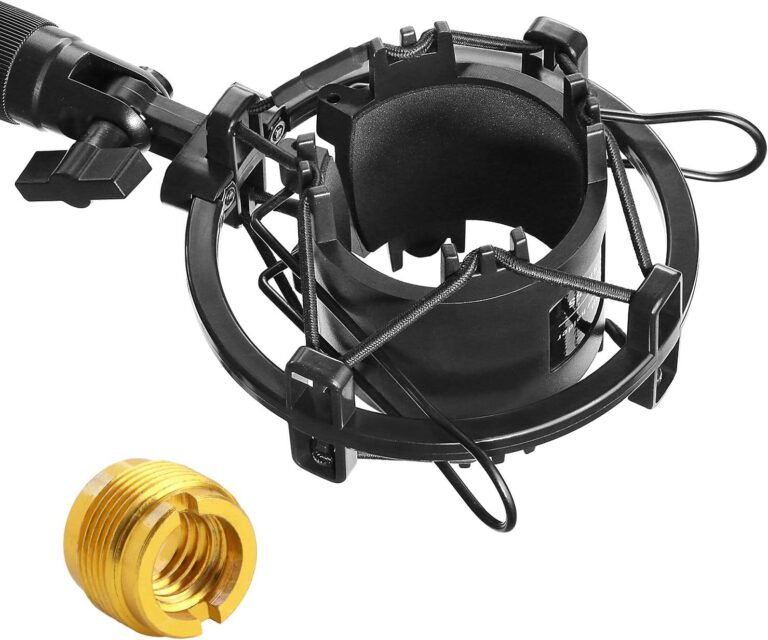Shure SM57 Review
Few pieces of audio equipment have achieved the iconic status of the Shure SM57. Introduced in 1965 by Shure Incorporated, a company synonymous with rugged and reliable audio gear, the SM57 has become a staple in recording studios, live venues, and even political podiums worldwide. Often dubbed the “workhorse microphone,” it’s celebrated for its durability, versatility, and unmistakable sound. Whether you’re a musician capturing a snarling guitar amp, a podcaster recording crisp vocals, or a live sound engineer miking a drum kit, the SM57 delivers consistent, professional-grade results at a price that won’t break the bank. In this review, we’ll dive deep into what makes the Shure SM57 a timeless tool, examining its design, sound quality, real-world applications, strengths, weaknesses, and its enduring legacy in the audio world.
Shure SM57 Review

To understand the SM57’s significance, we need to step back to its origins. Shure, founded in 1925 by Sidney N. Shure, initially focused on radio parts before pivoting to microphones in the 1930s. By the 1960s, the company had established itself as a leader in audio technology. The SM57 was born out of this legacy, designed as a refinement of Shure’s earlier Unidyne III capsule technology, which debuted in the Shure 545 microphone. Engineer Ernie Seeler spearheaded the development, aiming to create a microphone that could handle high sound pressure levels (SPL) while maintaining clarity across a wide frequency range.
Released in 1965, the SM57 quickly gained traction for its ability to capture instruments with precision, especially in live settings. Its rugged construction made it a go-to for touring musicians, while its affordability—originally priced at around $85 (equivalent to roughly $750 today, adjusted for inflation)—brought professional audio quality within reach of smaller studios and performers. Over the decades, it’s been used to record everything from John Lennon’s vocals to the snare drums on countless rock albums, and it’s even become the microphone of choice for U.S. presidential speeches since the Lyndon B. Johnson administration.
Design and Build Quality
The Shure SM57’s design is deceptively simple, yet it’s a masterclass in form following function. At first glance, it resembles its sibling, the SM58, with a cylindrical body and a grille-covered capsule. However, the SM57 lacks the SM58’s prominent ball grille, opting instead for a flatter, more tapered head that’s ideal for close-miking instruments. Measuring 6.2 inches long and weighing just 10 ounces, it’s compact and easy to handle, whether mounted on a stand or handheld.
The microphone’s body is constructed from die-cast steel, giving it a tank-like durability that’s become the stuff of legend. Stories abound of SM57s surviving drops, kicks, and even being run over by tour buses—only to keep working flawlessly. The grille, made of hardened steel, protects the dynamic cartridge inside, which is further shielded by an internal shock-mount system that reduces handling noise and vibrations. This ruggedness isn’t just marketing hype; it’s a practical feature that ensures the SM57 can withstand the rigors of live performance and rough handling.
The SM57 is a cardioid dynamic microphone, meaning it picks up sound primarily from the front while rejecting noise from the sides and rear. This polar pattern is key to its versatility, allowing it to isolate sound sources in noisy environments. Unlike condenser microphones, which require phantom power and are more delicate, the SM57’s dynamic design needs no external power and thrives in high-SPL situations, making it perfect for loud sources like guitar amps and drums.
Sound Quality and Performance
The heart of the SM57 is its sound, and it’s here that the microphone truly shines. Its frequency response spans 40 Hz to 15 kHz, tailored to emphasize midrange frequencies while rolling off extreme lows and highs. This gives it a warm, punchy character that’s ideal for instruments like snare drums, electric guitars, and brass. The slight presence boost around 4-6 kHz adds clarity and definition, ensuring that sources cut through a mix without sounding harsh.
When close-miking a guitar amplifier, the SM57 captures the raw energy and bite of the tone, faithfully reproducing everything from creamy overdrive to aggressive distortion. Position it an inch or two from the speaker cone, angled slightly off-axis, and you’ll get a sound that’s been heard on countless records—think of the gritty guitar tones on AC/DC’s Back in Black or Nirvana’s Nevermind. Move it closer to the center of the cone for brightness, or toward the edge for a warmer, fuller sound; the SM57 rewards experimentation.
On drums, the SM57 is equally impressive. It’s a go-to for snare drums, delivering a crisp attack and a full-bodied crack that sits perfectly in a mix. Engineers often pair it with a condenser mic on the snare’s bottom head to capture the rattle of the wires, but the SM57 alone can carry the load in a pinch. It’s also effective on toms and even kick drums (though many prefer a dedicated kick mic like the Shure Beta 52A for deeper lows).
Vocals are where the SM57 diverges from its sibling, the SM58. While the SM58 is optimized for singing with a built-in pop filter and a smoother high-end, the SM57 can still handle vocals effectively, especially in a pinch or for a raw, unpolished sound. Its lack of a pop filter means it’s more susceptible to plosives (“p” and “b” sounds), but with a separate windscreen and proper technique, it’s been used successfully by artists like Bono and Jack White for its distinctive character.
One of the SM57’s standout traits is its ability to handle high SPLs—up to 150 dB or more—without distortion. This makes it a champ for loud sources, from screaming trumpets to pounding percussion. Its off-axis rejection is also excellent, minimizing bleed from nearby instruments in live settings or tight studio spaces.
Applications: Studio, Stage, and Beyond
The SM57’s versatility is perhaps its greatest strength. In the studio, it’s a Swiss Army knife for recording engineers. Guitarists swear by it for amps, drummers rely on it for snares and toms, and horn players appreciate its ability to capture their instruments’ brassy bite. It’s even been used on bass amps, acoustic guitars, and percussion like congas or tambourines, proving its adaptability across genres.
On stage, the SM57 is equally indispensable. Its cardioid pattern and durability make it a favorite for live sound engineers tasked with miking instruments in chaotic environments. Whether it’s a punk band thrashing in a sweaty club or an orchestra performing in a concert hall, the SM57 delivers consistent results. Its feedback rejection is another boon in live settings, where monitor bleed can wreak havoc.
Beyond music, the SM57 has found a home in broadcasting and public speaking. Its clarity and reliability have made it the microphone of choice for U.S. presidents since the 1960s, often seen on podiums flanked by Secret Service agents. Podcasters and voiceover artists also use it, drawn by its affordability and professional sound.
Comparisons to Other Microphones
How does the SM57 stack up against competitors? Compared to its sibling, the SM58, the SM57 trades vocal optimization for instrument versatility. The SM58’s pop filter and smoother highs make it better for singers, but the SM57’s flatter grille and rawer sound give it an edge on amps and drums.
Against Sennheiser’s e609, another popular guitar amp mic, the SM57 offers a brighter, more defined sound, while the e609 leans darker and warmer. The e609’s flat profile is easier to position, but the SM57’s durability and wider application range often tip the scales in its favor.
For budget options like the Pyle PDMIC58 (a common SM57 clone), the Shure original outclasses them in build quality and sound fidelity. Counterfeits are a concern with the SM57’s popularity, so buying from reputable dealers is key.
Why the SM57 Endures
In an era of high-tech condensers and USB mics, why does a 60-year-old dynamic microphone remain relevant? The answer lies in its simplicity and reliability. The SM57 doesn’t rely on bells and whistles—it’s a no-nonsense tool that gets the job done. Its sound has shaped modern music, from classic rock to hip-hop, and its price-to-performance ratio is unmatched. At $99, it’s an entry point to professional audio that even beginners can afford, yet it’s trusted by Grammy-winning engineers.
Shure’s commitment to quality control ensures that today’s SM57s sound as good as those from decades past. While manufacturing has shifted from the U.S. to Mexico and China, the design remains faithful to Ernie Seeler’s vision. That consistency, paired with its indestructible build, keeps it in gig bags and studios worldwide.
Conclusion
The Shure SM57 isn’t just a microphone—it’s an institution. Its rugged design, versatile sound, and storied history make it a must-have for anyone serious about audio. Whether you’re tracking your first demo or reinforcing a stadium show, the SM57 delivers a performance that’s hard to beat at any price. It’s not the flashiest mic on the market, nor the most specialized, but it’s the one you’ll reach for again and again. In a world of fleeting trends, the SM57 stands as a testament to the power of timeless engineering. If you don’t already own one, it’s time to add this legend to your toolkit—you won’t regret it.

